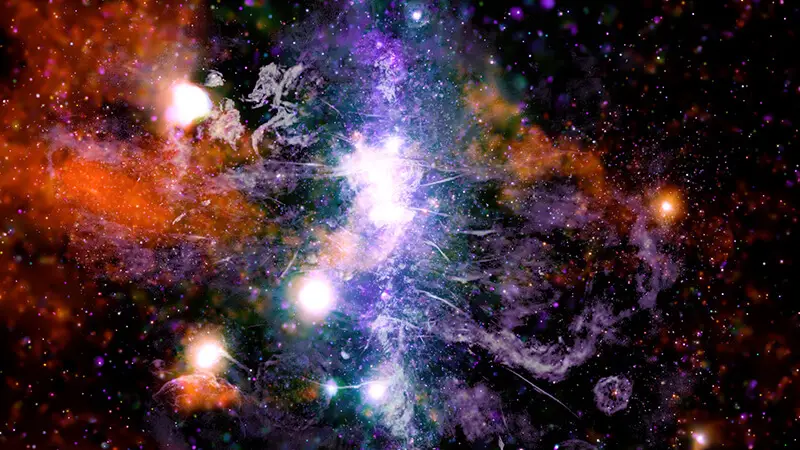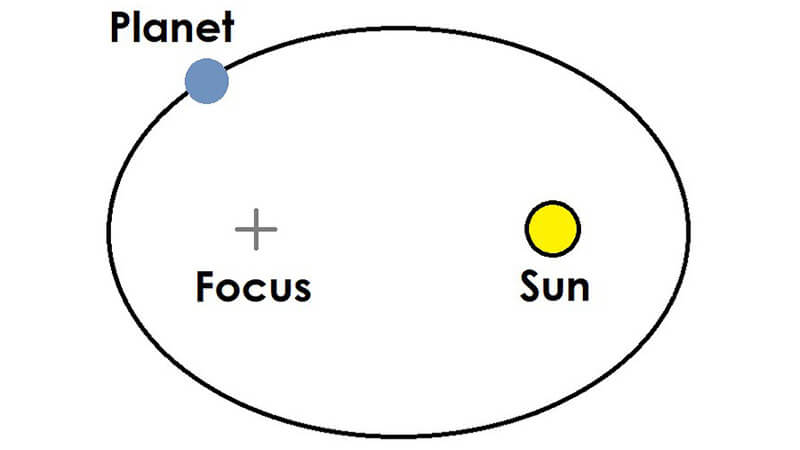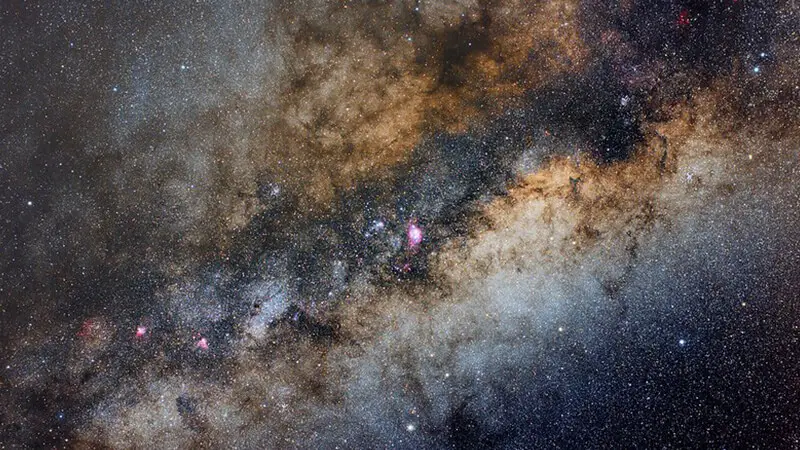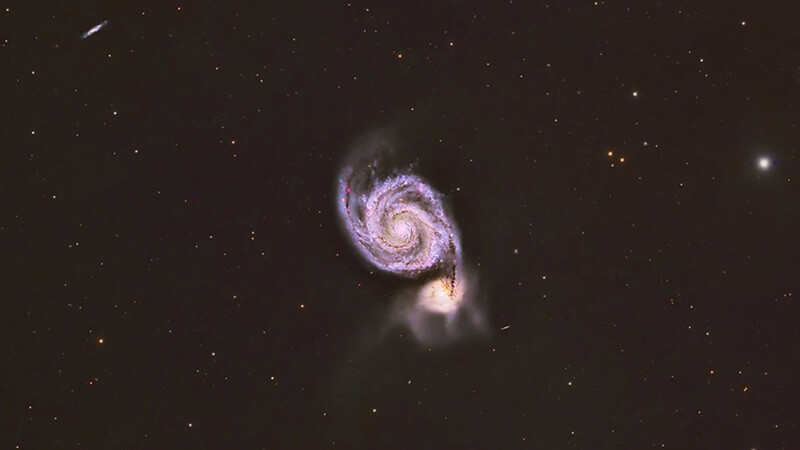Have you ever wondered if the Milky Way, our cosmic abode, follows a celestial path in the universe’s grand theater? It’s a question that sparks curiosity about our place in the cosmos.
But it can be perplexing without a clear guide. You might be intrigued, but understanding the Milky Way’s movements, its orbit, and the cosmic dance it engages in can be challenging.
In this article, I’ll explain the mysteries, providing answers about what our galaxy orbits, the forces that shape its motion, and the cosmic connections that govern its journey through the universe. Let’s embark on this cosmic voyage together.
Does the Milky Way Orbit Anything?
The Milky Way does indeed orbit something remarkable. It revolves around a supermassive black hole called Sagittarius A*, which is about four million times the mass of our Sun. This awe-inspiring black hole sits at the heart of our galaxy, profoundly shaping its movements.
Let’s dive right in.
Recommended For You
Does the Milky Way Orbit Anything? Overview

In this section, you will learn about the galactic orbit of the Milky Way and its relation to the galactic plane and galactic center. These are fundamental before we can address the question “What does the Milky Way orbit?”
To better understand the concept of the Milky Way’s orbit, let us start by defining a few key terms:
- Galactic Orbit: The path that a celestial body, like a star or a galaxy, follows as it moves through space.
- Galactic Plane: An imaginary plane representing the spiral galaxy’s flat disc-like shape, such as the Milky Way.
- Galactic Center: The galaxy’s central region, typically containing a supermassive black hole and a large concentration of stars and gas.
The Milky Way is a barred spiral galaxy comprising numerous stars, planets, and other celestial bodies bound together by gravity. It is constantly moving and follows a specific galactic orbit.
Have you ever wondered if all the stars you see are in the Milky Way?
According to NASA Solar System Exploration, all of the stars in the Milky Way orbit a supermassive black hole at the galaxy’s center, which is estimated to be four million times as massive as the Sun.
All of the stars in the Milky Way orbit a supermassive black hole at the galaxy’s center, Sagittarius A*, which is estimated to be four million times as massive as the Sun.
The Milky Way’s orbit occurs within the galactic plane, the flattened, disc-like region where most of the galaxy’s stars and gas clouds are located. The orbit’s path revolves around the galactic center, approximately 28,000 light-years from our solar system. The Milky Way travels at an average speed of about 514,000 mph (828,000 km/hr) during its galactic orbit.
Now that you have a fundamental understanding of the Milky Way’s orbit concerning the galactic plane and center, we can further explore the topic in the next section, which will focus on the factors that influence the trajectory and speed of the Milky Way’s orbit.
Local Group and Gravitational Center

What is the significance of the Local Group and its gravitational center?
The Local Group, home to galaxies like the Milky Way and Andromeda, revolves around a gravitational center, influencing their cosmic dance. Understanding this pivotal dynamic unlocks insights into galactic behavior and future interactions.
In exploring whether the Milky Way orbits anything, examining its position within the Local Group, a collection of galaxies near one another is essential.
The Local Group comprises various members, including well-known ones such as the Andromeda Galaxy, Triangulum Galaxy, and numerous smaller satellite galaxies. The Milky Way is estimated to be one of the most massive galaxies in this group.
There is a gravitational center within the Local Group between the Milky Way and the Andromeda Galaxy. This center plays a pivotal role in the motion and behavior of these galaxies. Due to the mutual gravitational pull between galaxies continually interact, causing movements and sometimes even collisions.
Below is a list of notable members of the Local Group:
- Milky Way
- Andromeda Galaxy
- Triangulum Galaxy
- Large Magellanic Cloud
- Small Magellanic Cloud
The Local Group does not revolve around a singular object or point. Instead, each galaxy is moving due to the effects of gravitational fields exerted by other group members. They dynamically interact and influence one another, ensuring constant motion and change.
Understanding the role of gravitational pull and the Local Group provides valuable context regarding the behavior of the Milky Way.
In the following section, you’ll dive deeper into the broader structure known as the Virgo Supercluster, where the Local Group resides, and explore its significance in the cosmic dance of galaxies.
Orbital Dynamics and Time Scale

How do Kepler’s Laws relate to the Milky Way’s motion?
Kepler’s Laws provide a framework to understand the Milky Way’s orbit. As we delve into the galactic time scale and celestial mechanics, these laws reveal essential insights into our galaxy’s intricate dance within the cosmos.
Kepler’s Laws are three essential rules that govern the motion of celestial bodies like planets, stars, and galaxies.
- The Law of Ellipses states that celestial bodies orbit in an elliptical path.
- The Law of Equal Areas explains that the speed of an orbiting body varies during its orbit, moving faster when closer to the object it orbits and slower when farther away.
- The Law of Harmonies relates the orbital period of an object to its average distance from the object it orbits.
We know our galaxy orbits something by applying these principles to the Milky Way. The Milky Way is thought to orbit around the Great Attractor, a massive gravitational center in our local galaxy supergroup.
However, it’s important to note that the expansion of space overwhelms the effects of gravitational attraction at this scale. This means that while our galaxy does orbit the Great Attractor, its motion is primarily driven by the overall expansion of the universe.
The concept of a Galactic Year is a significant factor in understanding the Milky Way’s orbit.
A Galactic Year is the time it takes for the Solar System to complete one full orbit around the center of our galaxy. It is estimated that:
- The Solar System travels at an average speed of 230 km/s (828,000 km/h or 514,000 mph) within its orbit around the galactic center.
- One Galactic Year is approximately 225-250 million Earth years.
Understanding Kepler’s Laws and the concept of a Galactic Year provides essential insights into the orbital dynamics of the Milky Way.
The following section will reveal further fascinating aspects of our galaxy’s structure and behavior as you continue reading.
Forces Impacting Galactic Motion
What role does dark matter play in galactic movement?
Dark matter is a crucial player in galactic motion. It exerts its influence through gravity, shaping galaxies like the Milky Way and contributing to their stability and unique patterns. Understanding dark matter’s impact unravels the mysteries of our cosmic neighborhood.
Dark Matter and Its Role

You may have heard of dark matter, an unseen and mysterious substance that makes up a significant portion of the universe’s mass. It is estimated to constitute approximately 27% of the total mass in the universe. It’s essential to understand the role of dark matter in galactic motion because it considerably impacts how galaxies, including the Milky Way, behave.
Dark matter interacts primarily through gravity, meaning it has a substantial effect on the motion of galaxies. Its distribution within and around galaxies is crucial in keeping them stable and their motion smooth.
In our Milky Way, dark matter creates a gravitational force that helps hold stars, gas, and dust together and allows for its iconic spiral pattern.
Influences of Other Nearby Galaxies
Galactic tidal interactions occur due to the gravitational influence of neighboring galaxies, such as the Andromeda galaxy. These interactions play a role in shaping the structure of galaxies and influencing their movement.
Other nearby galaxies can have a significant impact on the Milky Way’s motion as well.
Here are some key aspects of the galactic tidal interactions:
- Galactic tidal interactions can cause stretching or distortion of the galaxies.
- These interactions can also trigger star formation by compressing the gas in galaxies.
Andromeda’s influence on the Milky Way is especially noteworthy since it is the closest spiral galaxy to ours. The powerful gravitational interaction between these two galaxies will eventually lead to a collision in a few billion years, resulting in a merged galaxy.
As we have explored the forces impacting the motion of the Milky Way, it is clear that dark matter and the influence of nearby galaxies play crucial roles in its movement and shape.
Moving on to the next section, we will look deeper into the fascinating structure of our galaxy and its various components.
Interactions with Other Galaxies

Do nearby galaxies affect the Milky Way’s motion?
Yes, neighboring galaxies, especially the powerful Andromeda, influence the Milky Way’s motion. Galactic tidal interactions can lead to stretching, distortion, and even star formation. The dance of galaxies in our cosmic neighborhood is a dynamic spectacle that shapes the Milky Way’s journey.
As you explore whether the Milky Way orbits anything, it is essential also to understand our galaxy’s interactions with its neighbors. This section will teach you about the Milky Way’s future interactions with other galaxies and the anticipated outcomes.
Milky Way and Andromeda Collision
One of the most significant future events for the Milky Way is its predicted collision with the Andromeda galaxy. Galactic collisions are not uncommon in the universe, and they can lead to the formation of larger galaxies through a process known as a galactic merger.
As the two galaxies approach each other, their mutual gravitational pull will cause them to collide and eventually merge into a single, more massive galaxy.
Here are some key points about the Milky Way-Andromeda collision:
- Expected to occur in about 4 billion years
- Will result in a galactic merger, creating a new, larger galaxy
- Individual stars are unlikely to collide due to the vast distances between them
- Gas and dust interactions may trigger new star formation
Implications for Future Galactic Evolution
As previously mentioned, the collision between the Milky Way and Andromeda will have several effects on the future evolution of our galaxy.
One of these effects is the potential change in the Milky Way’s stellar populations. As gas and dust clouds in the two galaxies interact, new stars might form, altering the overall composition of the newly formed galaxy.
Additional outcomes of the galactic merger may include:
- Changes in the size, shape, and structure of the merged galaxy
- Possible displacement of some stars from their original locations
- Acceleration or deceleration of star formation rates
We will delve deeper into related topics and expand your knowledge about the Milky Way’s interactions with its cosmic neighbors. Understanding these interactions, particularly the Milky Way’s collision with Andromeda, can help provide insight into how our galaxy’s orbit and structure may change.
With this information, you should be well-prepared for the upcoming sections.
Supercluster and Cosmic Dance

What’s the Milky Way’s role in the cosmic dance?
The Milky Way is vital in the Laniakea Supercluster – a colossal cosmic structure. It orbits the Great Attractor within this supercluster, influenced by gravitational forces. Understanding its place in this cosmic ballet reveals the galaxy’s intricate journey through the universe’s grand tapestry.
In this section, you will explore the Milky Way’s position within the larger cosmic structures and its motion within them.
You will find information about the large-scale structure of the universe, the Laniakea Supercluster, and the Milky Way’s role within these colossal formations.
Milky Way’s Place in the Laniakea Supercluster
First, let’s discuss the large-scale structure of the universe. The cosmos comprises a vast network of superclusters, empty voids, and “walls” of galaxies interconnected to form the cosmic web.
One prominent feature of this cosmic structure is the Laniakea Supercluster—a massive assembly consisting of galaxy clusters and galaxy groups, including our very own Milky Way.
The Milky Way, a spiral galaxy spanning over 100,000 light-years, is part of the Local Group galaxy group.
This group contains over 54 galaxies, all residing within the Virgo Supercluster. Fittingly, the name Laniakea means “immense heaven” in Hawaiian, reflecting its grand scale and significance in the universe.
Orbital-Motion Within Large-Scale Structure
Moving on to the motion of the Milky Way within these vast structures, it is challenging to define a precise orbit due to their size and low density. However, some clues hint towards the gravitational attractions at play.
The Milky Way is thought to orbit the Great Attractor, a concentrated mass millions of times more massive than the Milky Way itself. This enigmatic force resides within the Laniakea Supercluster and is responsible for attracting nearby galaxies.
Although the metric expansion of space and cosmic web structure influence the motion of galaxies on an intergalactic scale, the Milky Way’s position and motion within the large-scale structure are determined by nearby gravitational attractions.
Critical factors in the Milky Way’s motion can be highlighted as follows:
- Supercluster’s Effects – Large groups of interconnected galaxies that make up cosmic structures
- Laniakea Overview – A massive assembly consisting of galaxy clusters and galaxy groups
- Milky Way’s Position – Part of the Local Group within the Virgo Supercluster
- Large-Scale Structure Overview – Cosmic web consisting of superclusters, voids, and galaxy “walls.”
- Milky Way’s Motion – Orbiting the Great Attractor within the Laniakea Supercluster, influenced by gravitational attractions
With a better understanding of the Milky Way’s place and motion within the cosmic dance, you are now ready to delve into further details and intricacies of our galaxy and its surroundings.
In the next section, we will explore the processes that govern the formation and behavior of galaxies, shedding light on the principles shaping our Milky Way.
Does the Milky Way Orbit Andromeda?

Does the Milky Way Orbit Andromeda?
The Milky Way and Andromeda galaxies share a unique gravitational relationship. While they’re not traditional orbiters, they’re gravitationally bound in the Local Group and destined for a collision in 3 to 6 billion years, eventually merging into a single, larger galaxy.
The relationship between the Milky Way and Andromeda galaxies is one of mutual gravitational attraction. The answer is more complex if you wonder whether the Milky Way orbits the nearby galaxy.
While these two galaxies are part of the Local Group, a cluster of galaxies that are gravitationally bound to each other, they do not orbit each other like typical celestial bodies. Instead, they are on a collision course, drawn together by gravity.
The future collision between the Milky Way and Andromeda is a fascinating topic. Scientists estimate the collision will occur in about 3 to 6 billion years.
During this event, the two galaxies will pass through each other at a million miles an hour, although the process will take millions of years to complete. Finally, the Milky Way and Andromeda will merge into one larger galaxy when everything settles down.
Key aspects of the Andromeda-Milky Way relationship include:
- The gravitational attraction between the two galaxies
- Part of the same Local Group of galaxies
- Not orbiting each other in a traditional sense
- On a future collision course
As you continue to explore the vast subject of the cosmos, it’s essential to remember that the universe is dynamic and ever-changing. With this understanding of the impending collision between the Milky Way and Andromeda, you can more fully appreciate the interplay between celestial bodies and anticipate further discoveries in the fascinating realm of astronomy.
The following section will delve deeper into the Milky Way’s structure and role in shaping our understanding of the cosmos.
Does the Milky Way Orbit a Black Hole? Sagittarius A*
At the heart of the Milky Way galaxy lies a supermassive black hole called Sagittarius A*. This central black hole significantly impacts the surrounding environment, shaping the galactic motion.
Observations show that many stars orbit this massive and compact object, Sgr A*. The way these stars move and interact with Sagittarius A* is solid evidence that it is a black hole. Other celestial configurations, such as a cluster of dead stars, would result in different orbits and interactions.
The black hole’s effects on the Milky Way can be seen in various ways:
- It influences the orbits of stars within its vicinity.
- It can generate strong gravitational forces that alter the paths of other celestial bodies.
- Its existence helps determine the overall shape and structure of the galaxy.
While the Milky Way’s central black hole is massive, it should be noted that it is not heavy enough to have the entire galaxy orbiting around it. Instead, the galaxy’s motion is influenced by a complex interplay of gravitational forces among all celestial bodies, including dark matter and other massive objects throughout its vast expanse.
Frequently Asked Questions
Does Milky Way revolve around anything?
The Milky Way does indeed revolve around a central point, much like a giant cosmic carousel. This central point is a supermassive black hole known as Sagittarius A*, which resides in the core of our galaxy. Imagine yourself within the Milky Way, and you’ll find that the stars, including our sun, orbit around this colossal gravitational behemoth at its heart. This phenomenon gives our galaxy its spiral shape, with stars moving in an intricate cosmic dance around the black hole.
what does the Milky Way orbit?
The Milky Way galaxy, stars, and other objects orbit around a supermassive black hole at its center, known as Sagittarius A*. However, on a larger cosmic scale, the Milky Way is influenced by the gravitational interactions with other galaxies in the Local Group, particularly the Andromeda Galaxy, as they are on a collision course with each other. So, the Milky Way’s motion is influenced by its central black hole and the gravitational dynamics of its galactic neighborhood.
Do galaxies orbit anything?
What do galaxies orbit? Galaxies, as vast collections of stars and other matter, do not typically orbit other individual objects like planets orbit stars. Instead, galaxies can be part of larger structures, such as galaxy groups or clusters, where multiple galaxies are bound by their mutual gravitational attraction. These groups and clusters can exhibit complex motions within the broader cosmic framework of the universe, but the galaxies themselves do not follow simple orbits around single objects.
Summary: Milky Way Orbit
Thank you for reading my article “Does the Milky Way Orbit Anything?”
As you’ve learned, the Milky Way doesn’t orbit another celestial object exactly. Instead, it’s drawn towards the Great Attractor, a gravitational center in our local supergroup. However, the metric expansion of space disrupts this effect on a large scale.
Inside our galaxy, all the stars move around a supermassive black hole at the Milky Way’s center. This black hole is four million times more massive than our Sun and is about 28,000 light-years away from Earth.
So, is the Milky Way orbiting something?
In summary, while the Milky Way itself doesn’t orbit another object, the stars within it have their orbital dance around a central supermassive black hole.
Thank you again for joining me on this journey, and I hope you enjoyed learning about our galaxy’s intriguing motion. The next time someone asks, “What is the Milky Way orbiting?” you can answer!
Read my other articles in my Milky Way series:
- Can You See the Milky Way with a Half Moon?
- How Many Solar Systems in the Milky Way?
- When is Milky Way Season?
- Why Does the Milky Way Look Cloudy?
- Are all the stars we see in the Milky Way?
- Are the constellations in the Milky Way?
- How are Milky Way pictures taken?
- Can you see the Milky Way with a full moon?
- Can you see the Milky Way on a cruise?
- Can I See the Milky Way with My Eyes?




